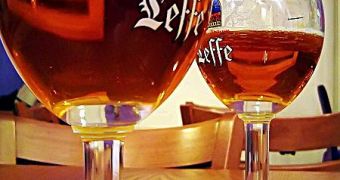For a long time, the drink industry has been troubled by a very serious obstacle in providing consumers with better products – the fact that their drinks degrade over time on account of chemical reactions that go on inside. A large part of these reactions is caused by riboflavin (vitamin B2), which catalyzes photooxidation reactions inside some of the most popular drinks out there. Therefore, many brands need to pack their products in sun-blocking wraps, to prevent sunlight from reaching the liquid. Now, researchers have found a way to remove the vitamin from the drink.
The find could have significant implications for a wide range of end-products, including alcohol, sodas and energy drinks. Their taste, quality and shelf life could be significantly extended. Just imagine buying a beer that is never stale, or a soda that tastes just as fresh as when it left the assembly line a month earlier. The light-shielding containers could also become a thing of the past, as researchers have determined how to extract riboflavin from a wide variety of drinks, AlphaGalileo reports.
Behind the accomplishment are experts at the Technical University of Dortmund, in Germany, who were led by expert Borje Sellergren. The team adopted a fairly complex method of capturing and removing the chemical. They created, and then imprinted riboflavin-shaped pockets inside a polymer material. They did this by synthesizing it in the presence of riboflavin tetra-acetate template molecules. When the template was removed, many empty receptor pockets were left behind, which the experts then demonstrated could remove riboflavin from drinks by binding to it.
“An important transition [for molecularly imprinted polymers] from being artificial receptors used in laboratory applications to being scrubbers capable of selectively removing unwanted, toxic or irritating compounds from many types of consumer products,” Seton Hall University expert Nicholas Snow, from South Orange, the United States, says of the innovation.
As opposed to non-imprinted control polymer materials, the imprinted variety that the German experts created can extract up to 86 percent of the riboflavin. The control only managed to extract 47 percent. “Food analysis and processing is a field that would profit from such receptors. Generic techniques to prepare fully water-compatible molecularly imprinted polymers will become important for unlocking such applications,” Sellergren says.
The method “is so simple and effective that it will most likely become routinely incorporated in the synthesis of a new generation of improved water-compatible imprinted polymers,” analytical applications of molecularly imprinted polymers expert Antonio Martín-Esteban adds. He holds an appointment at the Madrid, Spain-based National Institute for Agriculture and Food Research and Technology.

 14 DAY TRIAL //
14 DAY TRIAL //